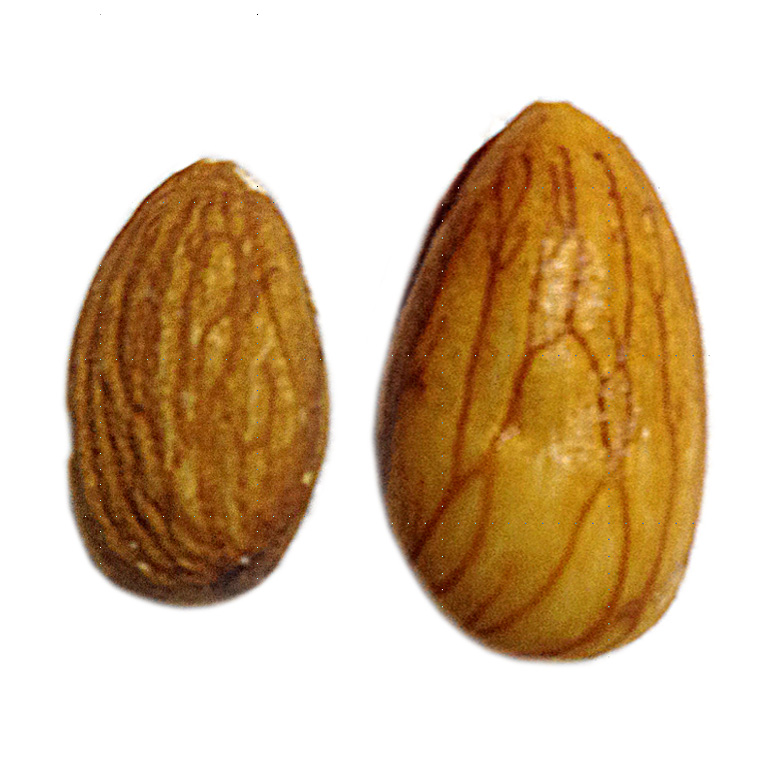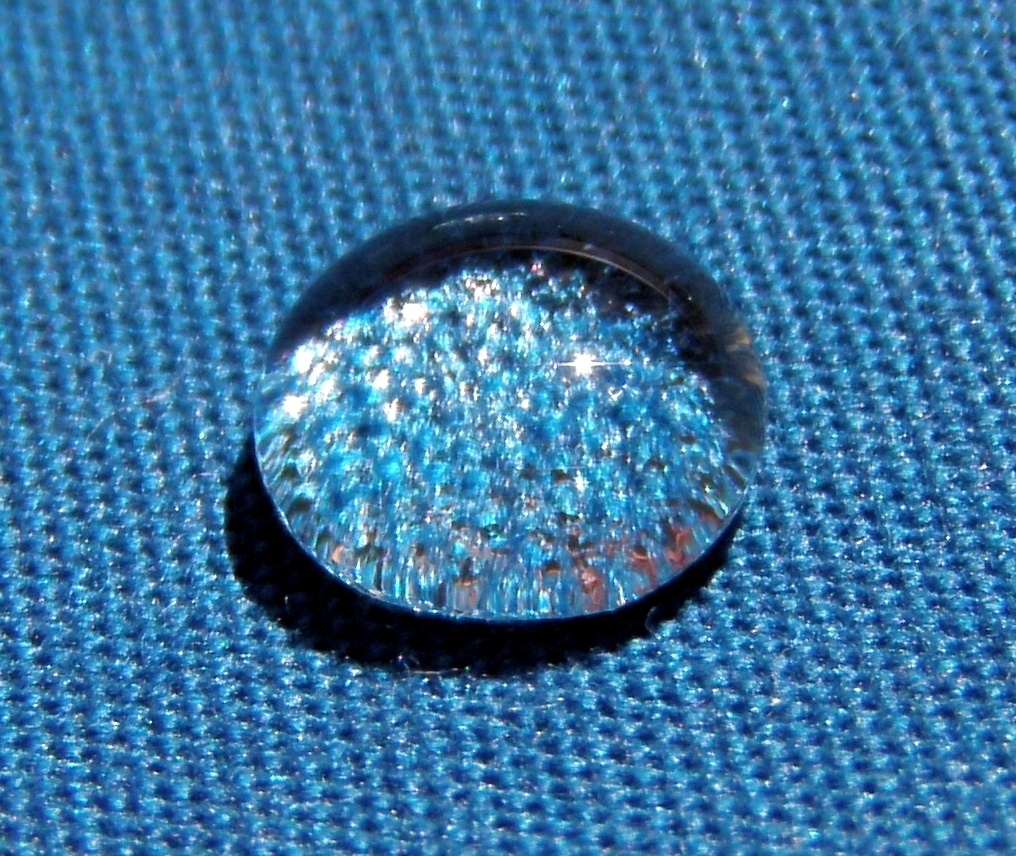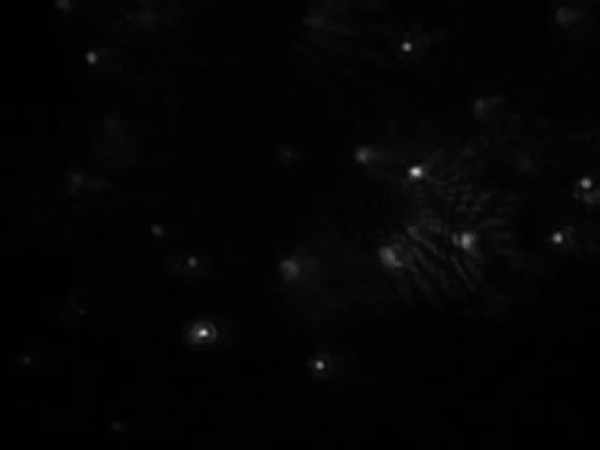|
Imbibition
Imbibition is a special type of diffusion that takes place when liquid is absorbed by solids-Colloid, colloids causing an increase in volume. Water surface potential movement takes place along a concentration gradient; some dry materials absorb water. A gradient between the absorbent and the liquid is essential for imbibition. For a substance to imbibe a liquid, there must first be some attraction between them. Imbibition occurs when a wetting fluid displaces a non-wetting fluid, the opposite of drainage in which a non-wetting phase displaces the wetting fluid. The two processes are governed by different mechanisms. Imbibition is also a type of diffusion since water movement is along the concentration gradient. Seeds and other such materials have almost no water hence they absorb water easily. Water potential gradient between the absorbent and liquid imbibed is essential for imbibition. Examples One example of Imbibition in nature is the absorption (chemistry), absorption of w ... [...More Info...] [...Related Items...] OR: [Wikipedia] [Google] [Baidu] |
Technicolor
Technicolor is a family of Color motion picture film, color motion picture processes. The first version, Process 1, was introduced in 1916, and improved versions followed over several decades. Definitive Technicolor movies using three black-and-white films running through a special camera (3-strip Technicolor or Process 4) started in the early 1930s and continued through to the mid-1950s, when the 3-strip camera was replaced by a standard camera loaded with single-strip "monopack" color negative film. Technicolor Laboratories were still able to produce Technicolor prints by creating three black-and-white matrices from the Eastmancolor negative (Process 5). Process 4 was the second major color process, after Britain's Kinemacolor (used between 1909 and 1915), and the most widely used color process in Cinema of the United States, Hollywood during the Golden Age of Hollywood. Technicolor's #Process 4: Development and introduction, three-color process became known and cele ... [...More Info...] [...Related Items...] OR: [Wikipedia] [Google] [Baidu] |
Dye-transfer Process
Dye transfer is a continuous-tone color photographic printing process. It was used to print Technicolor films, as well as to produce paper colour prints used in advertising, or large transparencies for display. History The use of dye imbibition for making full-color prints from a set of black-and-white photographs taken through different color filter (optics), filters was first proposed and patented by Charles Cros in 1880.Pénichon, Sylvie (2013). "Twentieth-Century Color Photographs: Identification and Care". The Getty Conservation Institute, Los Angeles. pp. 127-131. It was commercialized by Sanger Shepherd, Edward Sanger-Shepherd, who in 1900 was marketing kits for making color prints on paper and Slide projector, slides for projection. Imbibition printing was initially in monochrome. The basic underlying principle is that bichromate development of a silver gelatine photographic emulsion (not strictly a real chemical emulsion) results in the gelatine being differentially tanne ... [...More Info...] [...Related Items...] OR: [Wikipedia] [Google] [Baidu] |
Amott Test
The Amott test is one of the most widely used empirical wettability measurements for reservoir cores in petroleum engineering. The method combines two spontaneous imbibition measurements and two forced displacement measurements. This test defines two different indices: the Amott water index (I_w) and the Amott oil index (I_o). Amott–Harvey index The two Amott indices are often combined to give the Amott–Harvey index. It is a number between −1 and 1 describing wettability of a rock in drainage processes. It is defined as: :AI=I_w-I_o These two indices are obtained from special core analysis (SCAL) experiments ( porous plate or centrifuge) by plotting the capillary pressure curve as a function of the water saturation as shown on figure 1: :I_w=\frac with S_ is the water saturation for a zero capillary pressure during the imbibition process, S_ is the irreducible water saturation and S_ is the residual oil saturation after imbibition. :I_o=\frac with S_ is the oil saturation f ... [...More Info...] [...Related Items...] OR: [Wikipedia] [Google] [Baidu] |
Germination
Germination is the process by which an organism grows from a seed or spore. The term is applied to the sprouting of a seedling from a seed of an angiosperm or gymnosperm, the growth of a sporeling from a spore, such as the spores of fungi, ferns, bacteria, and the growth of the pollen tube from the pollen grain of a seed plant. Seed plants Germination is usually the growth of a plant contained within a seed resulting in the formation of the seedling. It is also the process of reactivation of metabolic machinery of the seed resulting in the emergence of radicle and plumule. The seed of a vascular plant is a small package produced in a fruit or cone after the union of male and female reproductive cells. All fully developed seeds contain an embryo and, in most plant species some store of food reserves, wrapped in a seed coat. Dormant seeds are viable seeds that do not germinate because they require specific internal or environmental stimuli to resume growth. Und ... [...More Info...] [...Related Items...] OR: [Wikipedia] [Google] [Baidu] |
Wetting
Wetting is the ability of a liquid to displace gas to maintain contact with a solid surface, resulting from intermolecular interactions when the two are brought together. These interactions occur in the presence of either a gaseous phase or another liquid phase not miscible with the wetting liquid. The degree of wetting (wettability) is determined by a force balance between adhesive and cohesive forces. There are two types of wetting: non-reactive wetting and reactive wetting. Wetting is important in the bonding or adherence of two materials. The wetting power of a liquid, and surface forces which control wetting, are also responsible for related effects, including capillary effects. Surfactants can be used to increase the wetting power of liquids such as water. Wetting has gained increasing attention in nanotechnology and nanoscience research, following the development of nanomaterials over the past two decades (i.e., graphene, carbon nanotube, boron nitride nanomesh). ... [...More Info...] [...Related Items...] OR: [Wikipedia] [Google] [Baidu] |
Syneresis (chemistry)
Syneresis (also spelled 'synæresis' or 'synaeresis'), in chemistry, is the solvent extraction, extraction or expulsion of a liquid from a gel, such as when Serum (blood), serum drains from a contracting clot of blood. Another example of syneresis is the collection of whey on the surface of yogurt. Syneresis can also be observed when the amount of diluent in a swollen polymer exceeds the solubility limit as the temperature changes. A household example of this is the counterintuitive expulsion of water from dry gelatin when the temperature increases. Syneresis has also been proposed as the mechanism of formation for the Silicon dioxide, amorphous silica composing the frustule of diatoms. Examples In the processing of dairy milk, for example during cheese making, syneresis is the formation of the curd due to the sudden removal of the hydrophilic peptides, macropeptides, which causes an imbalance in intermolecular forces. Bonds between hydrophobic sites start to develop and are enfor ... [...More Info...] [...Related Items...] OR: [Wikipedia] [Google] [Baidu] |
Skin Graft
Skin grafting, a type of graft (surgery), graft surgery, involves the organ transplant, transplantation of skin without a defined circulation. The transplanted biological tissue, tissue is called a skin graft. Surgeons may use skin grafting to treat: * extensive wounding or physical trauma, trauma * Burn (injury), burns * areas of extensive skin loss due to infection such as necrotizing fasciitis or purpura fulminans * specific surgeries that may require skin grafts for healing to occur – most commonly removal of skin cancers Skin grafting often takes place after serious injuries when some of the body's skin is damaged. Surgical removal (excision or debridement) of the damaged skin is followed by skin grafting. The grafting serves two purposes: reducing the course of treatment needed (and time in the hospital), and improving the function and appearance of the area of the body which receives the skin graft. There are two types of skin grafts: * Partial-thickness: The more co ... [...More Info...] [...Related Items...] OR: [Wikipedia] [Google] [Baidu] |
Seed
In botany, a seed is a plant structure containing an embryo and stored nutrients in a protective coat called a ''testa''. More generally, the term "seed" means anything that can be Sowing, sown, which may include seed and husk or tuber. Seeds are the product of the ripened ovule, after the embryo sac is fertilization, fertilized by Pollen, sperm from pollen, forming a zygote. The embryo within a seed develops from the zygote and grows within the mother plant to a certain size before growth is halted. The formation of the seed is the defining part of the process of reproduction in seed plants (spermatophytes). Other plants such as ferns, mosses and marchantiophyta, liverworts, do not have seeds and use water-dependent means to propagate themselves. Seed plants now dominate biological Ecological niche, niches on land, from forests to grasslands both in hot and cold climates. In the flowering plants, the ovary ripens into a fruit which contains the seed and serves to disseminate ... [...More Info...] [...Related Items...] OR: [Wikipedia] [Google] [Baidu] |
Colloid
A colloid is a mixture in which one substance consisting of microscopically dispersed insoluble particles is suspended throughout another substance. Some definitions specify that the particles must be dispersed in a liquid, while others extend the definition to include substances like aerosols and gels. The term colloidal suspension refers unambiguously to the overall mixture (although a narrower sense of the word '' suspension'' is distinguished from colloids by larger particle size). A colloid has a dispersed phase (the suspended particles) and a continuous phase (the medium of suspension). The dispersed phase particles have a diameter of approximately 1 nanometre to 1 micrometre. Some colloids are translucent because of the Tyndall effect, which is the scattering of light by particles in the colloid. Other colloids may be opaque or have a slight color. Colloidal suspensions are the subject of interface and colloid science. This field of study began in 1845 by Franc ... [...More Info...] [...Related Items...] OR: [Wikipedia] [Google] [Baidu] |
Embryo
An embryo ( ) is the initial stage of development for a multicellular organism. In organisms that reproduce sexually, embryonic development is the part of the life cycle that begins just after fertilization of the female egg cell by the male sperm cell. The resulting fusion of these two cells produces a single-celled zygote that undergoes many cell divisions that produce cells known as blastomeres. The blastomeres (4-cell stage) are arranged as a solid ball that when reaching a certain size, called a morula, (16-cell stage) takes in fluid to create a cavity called a blastocoel. The structure is then termed a blastula, or a blastocyst in mammals. The mammalian blastocyst hatches before implantating into the endometrial lining of the womb. Once implanted the embryo will continue its development through the next stages of gastrulation, neurulation, and organogenesis. Gastrulation is the formation of the three germ layers that will form all of the different parts of t ... [...More Info...] [...Related Items...] OR: [Wikipedia] [Google] [Baidu] |
Colloids
A colloid is a mixture in which one substance consisting of microscopically dispersed insoluble particles is suspended throughout another substance. Some definitions specify that the particles must be dispersed in a liquid, while others extend the definition to include substances like aerosols and gels. The term colloidal suspension refers unambiguously to the overall mixture (although a narrower sense of the word '' suspension'' is distinguished from colloids by larger particle size). A colloid has a dispersed phase (the suspended particles) and a continuous phase (the medium of suspension). The dispersed phase particles have a diameter of approximately 1 nanometre to 1 micrometre. Some colloids are translucent because of the Tyndall effect, which is the scattering of light by particles in the colloid. Other colloids may be opaque or have a slight color. Colloidal suspensions are the subject of interface and colloid science. This field of study began in 1845 by Francesco ... [...More Info...] [...Related Items...] OR: [Wikipedia] [Google] [Baidu] |
Biological Processes
Biological processes are those processes that are necessary for an organism to live and that shape its capacities for interacting with its environment. Biological processes are made of many chemical reactions or other events that are involved in the persistence and transformation of life forms. Regulation of biological processes occurs when any process is modulated in its frequency, rate or extent. Biological processes are regulated by many means; examples include the control of gene expression, protein modification or interaction with a protein or substrate molecule. * Homeostasis: regulation of the internal environment to maintain a constant state; for example, sweating to reduce temperature * Organization: being structurally composed of one or more cells – the basic units of life * Metabolism: transformation of energy by converting chemicals and energy into cellular components (anabolism) and decomposing organic matter ( catabolism). Living things require energy to mai ... [...More Info...] [...Related Items...] OR: [Wikipedia] [Google] [Baidu] |







